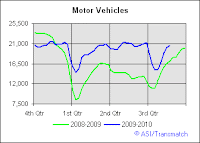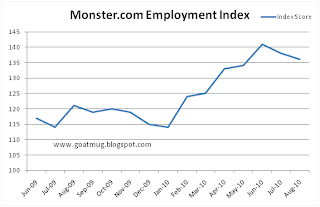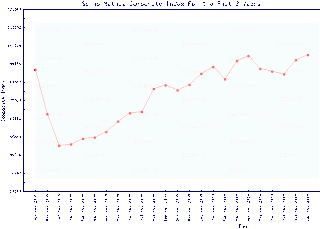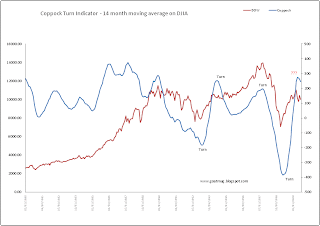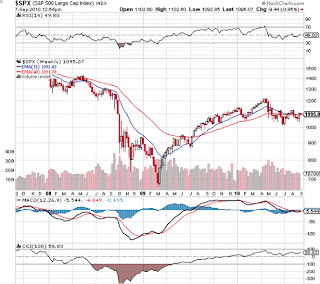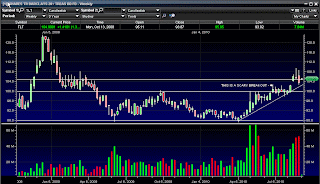BEIJING—By lowering China's growth target to 7.5% this year, Premier Wen Jiabao has signaled that an era of supercharged expansion may be coming to an end, a shift with profound implications for countries like Australia and Brazil that have prospered from red-hot Chinese demand for commodities.
The NPC will set key economic priorities for 2012 but as the WSJ's Aaron Back tells Deborah Kan, it's often what goes on behind the scenes that's most telling.
China has announced it is lowering its target growth forecast to 7.5% from 8%. Not a big move but enough to send a few tremors through the world's financial markets. Andrew Peaple and Martin Essex discuss what this means for the global economy. Photo: AP
The adjustment suggests that China's leaders have reached a comfort level with slower growth, and that they don't intend to stimulate the economy through state-led investment, as they have in the past. Instead, they plan to let a long-touted shift away from export-led expansion take its course.
The consequences of this shift depend on how well Beijing manages the transition. China's trading partners are bound to be affected in different ways.
A reduced pace of investment in infrastructure, power generation and exports would likely mean slower growing imports of steel, concrete, oil and other commodities—potentially a blow to Brazil, the oil states of the Middle East, Australia and other commodity powerhouses.
"We think China's supercycle for commodities is behind us," said Credit Suisse analyst Dong Tao.
But with the shift will also come new opportunities, both at home and abroad.
A China that relies more on consumer spending may pollute less, easing global environmental worries, and produce more jobs. The shift could also lift imports of software, entertainment, tourism, and high-technology goods and services produced by the U.S., Europe and other wealthier nations.
"Accelerating the transformation of the pattern of economic development…is both a long-term task and our most pressing task at present," Chinese Premier Wen Jiabao on Monday told the opening session of the National People's Congress, China's version of a parliament, which meets once a year.
China's official growth target has been set at 8% since 2005. The target is largely symbolic: For the past seven years, the Chinese economy has grown at an average annual clip of 10.9%. However, analysts say the 7.5% GDP growth target for 2012 indicates the direction of the economy sought by the government's most senior officials. The International Monetary Fund forecasts Chinese growth of 8.2% this year, and analysts generally peg it at 8% to 8.5%.
Mr. Wen, in his last year in China's No. 2 position, argued that China had little choice but to change its growth mix, with export markets in Europe, U.S. and Japan either growing slowly or in recession.
"Domestically, it has become more urgent but also more difficult…to alleviate the problem of unbalanced, uncoordinated and unsustainable development," he said.
Mr. Wen has been making that argument in one form or another since at least 2007, but the share of consumption as a percentage of the economy has fallen during that time nonetheless. Analysts say opposition from state-owned industries and provincial governments, which benefit from the current system, has frustrated change. So did the global financial crisis of 2008 and 2009, when China fended off the downturn by a massive stimulus program that relied on infrastructure spending.
Stephen Green, an analyst at Standard Chartered, said there may be a renewed appetite for change, citing a recent opinion piece in People's Daily, the Communist Party's newspaper, which argued "imperfect reforms are to be preferred to a crisis caused by no reforms." A report by the World Bank and an influential Chinese think-tank, the Development Research Center, also argued for fundamental change in the Chinese economy.
Premier Wen Jiabao opens the National People's Congress in Beijing on Monday.
Mr. Wen listed a number of initiatives, including boosts in the minimum wage and government support for the expansion of consumer credit and for "new forms of consumption," including online shopping and energy-efficient vehicles. He said China would ease the registration requirements for rural migrants to cities, making it easier for them to get better paying jobs. He also said that China would boost its pension and health-care systems, which could encourage Chinese families to spend more of their savings.
Mr. Green said that demographics as much as government policy is driving changes. The number of workers in China's work force is expected to start to decline in the next few years, putting more pressure on employers to lift wages." People are getting paid more," he said. "That's the main driver of rebalancing the economy so it's consumption-led."
The National Development and Reform Commission—the old State Planning Commission, which is China's most powerful domestic economic agency, estimated that in 2011 per capita disposable income rose 8.4% in the cities, adjusted for inflation, and 11.4% in the countryside.
On a more political note, Mr. Wen highlighted the need to protect farmers' rights to the land on which they work and live, saying that "these rights must not be violated by anyone."
China has witnessed a spate of often violent protests in recent years over the seizure of farmland by local officials, who typically offer villagers token compensation, and then sell it on to property developers at market prices. The issue came to the fore last year when residents of the southern village of Wukan staged a revolt over an alleged land grab, forcing local authorities to sack village officials, freeze a property development, and hold fresh elections.
One of the leaders of the Wukan rebellion was elected as village head over the weekend in a democratic vote—a remarkable turnaround that some analysts believe represents a potential new approach to social unrest.
Mr. Wen also set the 2012 target for the consumer-price index at 4%. While that is the same target as last year, it appears to be an actual goal rather than symbolic. Last year, the consumer-price index grew by 5.4%, though it was slowing in the second half of the year. From 2001 to 2010, inflation averaged just 2.2%.
"Slower growth and slightly higher inflation is the new normal" for China, said Arthur Kroeber, managing director of GK Dragonomics, a Beijing economic consulting firm.
Mr. Wen listed areas where the government had made progress, including in taming inflation and rising housing prices. The premier said the government would continue to discourage "speculative" real-estate spending. It has done so by squelching lending to real-estate developers who build housing for the rich and requiring down payments of 50% or more to buy such apartments.
At the same time, to avoid a real-estate market crash, China has ramped up production of low-income housing, dubbed "social housing." Mr. Wen said the government would finish two million apartments in 2012 and start construction on another seven million—enough apartments to house everyone in Canada. Still, that's a slower pace of building than earlier proposed. It's unclear how much of that is new construction and how much is housing that would have been built anyway and just renamed social housing. A miscalculation on the part of the government could produce a severe downturn in the housing market and the many industries that rely on apartment construction.
The goal, Mr. Wen said is to "bring property prices down to a reasonable level."
From WSJ http://online.wsj.com/article/SB10001424052970204276304577262882415736796.html?mod=googlenews_wsj















